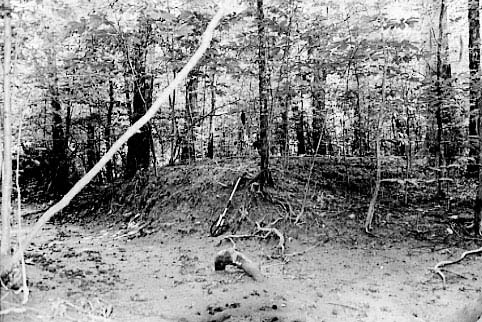 |
| Dead River Dike |
| South Carolina Department of Archives and History |
| National Register Properties in South Carolina Dead River Dike, Richland County (Address Restricted) |
 |
| Dead River Dike |
Dead River Dike is significant for its ability to yield information about settlement patterns in the region. Beginning in 1730, small farmers moved into the backcountry of South Carolina to find fertile farmland and to create “buffer zones” between the backcountry and the heavy coastal settlement centered around the city of Charleston. After the end of the Cherokee War in 1761 and the establishment of the state capital at Columbia in 1786, wealthy planters moved into the Congaree River valley to introduce the plantation system to the region. Settlers built dikes in an effort to control the periodic flooding of the Congaree River and utilize the fertile swampland on its border to grow crops. The cost of building and maintaining large earthen dike systems using slave labor in the disease-ridden swamp discouraged the efforts of most land owners and led to the decline of large-scale farming in the area. The dike is a 4-to-5-foot high, L-shaped earthen dike running north to south and turning at the north end to run east to west. The north-south leg is approximately 2000 feet long and the east-west leg is approximately 800 feet long. A canal runs adjacent to the dike. The dike is dissected by gaps caused by erosion or inundation is several places. Listed in the National Register November 25, 1996.
View the complete text of the nomination form for this National Register property. In addition, the Historic Agricultural Resources of Congaree Swamp National Monument, 1740-1900 includes historical background information for this and other related National Register properties.
Most National Register properties are privately owned and are not open to the public. The privacy of owners should be respected. Not all properties retain the same integrity as when originally documented and listed in the National Register due to changes and modifications over time.
Images and texts on these pages are intended for research or educational use. Please read our statement on use and reproduction for further information on how to obtain a photocopy or how to cite an item.
Images provided by the South Carolina Department of Archives and History.